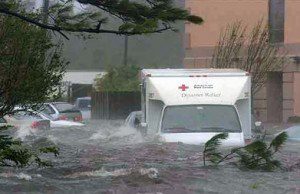Originally published in our book “Unready: To err is human – the other neglected side of Hospital Safety and Security” July, 2010 and as relevant four years later as it was on day one.
Due to length, we have broken this into two posts, of which this is the second. For context, it should be noted that this was written during the painful birth of the Department of Homeland Security. In retrospect, combining Public Health and the Non-Federal Healthcare Sector deserves questioning, especially as relates to All Hazards Security posture.
Myth: Public health and Private health care sectors – “A dynamic duo�
Reality: The All-Hazards Homeland Security Readiness and Public Health and Health Care sector lags behind most of its economic sector counterparts. The coupling of public health and private public health care providers has had its legal, ethical, moral communication and philosophical problems. In many respects, they are the “odd couple.â€
Healthcare accreditation organizations abound. Wikipedia provides a quick look at these organizations. We characterized them as “alphabet soup†(HFAP, JC, NCQA, CHAP, ACHP, HQAA, AAAHC, DNV, etc.) of external evaluation mechanisms.
None of the currently existing hospital external evaluation mechanisms for healthcare emergency management have yet developed assessment schemes which approximate an acceptable level of readiness envisioned by the National Response Framework.
 The author has been professionally engaged on one side or the other with healthcare external evaluations for more than 40 years. Established standards of care are designed to ensure a safe and secure patient environment, whether one is faced with earthquakes, floods, forest fires as was the case in Fairbanks, Alaska at -50 degrees, or dust storms, or terrorist attacks at +130 degrees in the desserts of Saudi Arabia. Most of us who are more than casual observers to evolving changes to standards over time understand that survey standards are subject to change as the treatment environment changes.
The author has been professionally engaged on one side or the other with healthcare external evaluations for more than 40 years. Established standards of care are designed to ensure a safe and secure patient environment, whether one is faced with earthquakes, floods, forest fires as was the case in Fairbanks, Alaska at -50 degrees, or dust storms, or terrorist attacks at +130 degrees in the desserts of Saudi Arabia. Most of us who are more than casual observers to evolving changes to standards over time understand that survey standards are subject to change as the treatment environment changes.
Many scholars have observed the harmful effects of the “industry to government regulator†swinging door. As we have seen, this leads to egregious conflicts of interest and other actions harmful to the trusting public. There are also concerns over the private sector bodies and the reality of their ability to balance the needs of the industry and the best interest of those receiving their services. These concerns were alive and well long before IOM’s landmark “To err is human,†probably best articulated by long-time critics and observers of the extant mechanisms for healthcare oversight. The following two quotes are taken from the Presidential Advisory Commission on Consumer Protection’s final meeting, March 1998.
 “Conflicts of interest can arise from multiple sources. For example, private sector accrediting bodies have, as one of their customers, the entities that the organization accredits. The organizations to be accredited sometimes are the same organizations that created or fostered the creation of the accrediting entity, and often are necessarily involved in identifying the standards to which they will be held accountable.â€
“Conflicts of interest can arise from multiple sources. For example, private sector accrediting bodies have, as one of their customers, the entities that the organization accredits. The organizations to be accredited sometimes are the same organizations that created or fostered the creation of the accrediting entity, and often are necessarily involved in identifying the standards to which they will be held accountable.â€
“Quality oversight organizations also have a second set of customers – healthcare consumers – who depend on the work of these organizations to make comparative judgments about the quality of certain types of healthcare organizations. This is particularly true when public regulators use accreditation as a means of meeting public standards (e.g., when JCAHO accredited hospitals are deemed to have met Medicare Conditions of Participation). Consumer advocacy organizations become concerned when the accrediting organization seems overly solicitous of the views of the industry, or when very few organizations have their accreditation denied.
The above referenced JCAHO is the re-branded JC, or Joint Commission. This organization has enjoyed a near monopoly in the hospital external evaluation arena and is used extensively as the mechanism of choice to assess healthcare quality, safety and security in the nation’s worldwide military, veterans, Native American, and public/private facilities.
The effectiveness of the accreditation and deeming mechanisms on the quality of care measured by hospital acquired infections, treatment errors, and violence in the workplace speak for themselves.
Our attention is focused on “the other side of safety and security, all-hazards readiness.†It should be obvious to all that the process did little to protect patients from the ravages of Katrina. The response to 9/11 exposed the gaps in the industry’s ability to protect the integrity of the hospital internal space. A quick look back at recent history of what appears to be a movement toward a “culture of preparedness†is in question.
A year before the 9/11 attacks, key elements of the private/public and governmental healthcare sectors met to consider how best to prepare for and respond to looming threats which would call for a “mass casualty†response from the industry. The broad consensus was to follow the JCAHO 1998 Environment of Care Standards and expand involvement with the greater community. This was followed by a number of public policy initiatives promoting community-wide emergency management.
 Fast-forward to June 2007. The Joint Commission alerted the industry that effective January 2008, hospitals were to meet “six critical areas of emergency management.†These new “Elements of Performance (EP)†were fundamental to any meaningful decision-making on “to protect in place or evacuate.†The pushback from client hospitals and trade organizations intensified, and by the end of the first quarter of the calendar year 2008, these EPs were no longer scored.
Fast-forward to June 2007. The Joint Commission alerted the industry that effective January 2008, hospitals were to meet “six critical areas of emergency management.†These new “Elements of Performance (EP)†were fundamental to any meaningful decision-making on “to protect in place or evacuate.†The pushback from client hospitals and trade organizations intensified, and by the end of the first quarter of the calendar year 2008, these EPs were no longer scored.
We see evidence that critical all-hazards evaluation tools have been formally de-emphasized in 2010 Emergency Management and Environment of Care guidelines. One such process tool useful in reviewing emergency preparedness is the “formal emergency management tracer.†This procedure follows the “clinical care tracer†model, which is highly regarded in evaluating quality of care given at various levels and locations of care provided throughout the patient’s stay in the hospital. Loss of the formal tracer tool is unfortunate, because the removal of documented “measures of success†requirement further erodes meaningful oversight.
Then there are the “alerts†to the industry which have us scratching our heads. One such “heads-up†alert is the article, “Annual security assessments become California law,†which in part states: “California, often the forerunner in compliance standards, may be leading the pack when it comes to security assessments.†The law may be unique, but the requirement has been on the books for decades.
The growth of external threats and poor preparedness and response performances in recent all-hazards events on the Gulf Coast and the lack of preparedness for H1N1 pandemic are, at least in part, reflective of a systemic failure of extant external evaluation mechanisms. The vulnerability of hospitals to both inside and outside attacks has increased over the last decade. We see a workplace struggling to deal with hospital acquired infections and seemingly unprepared to protect its own workforce from its own workforce, and one that has dismissed the need to defend their organizations from known man-made threats.






0 Comments